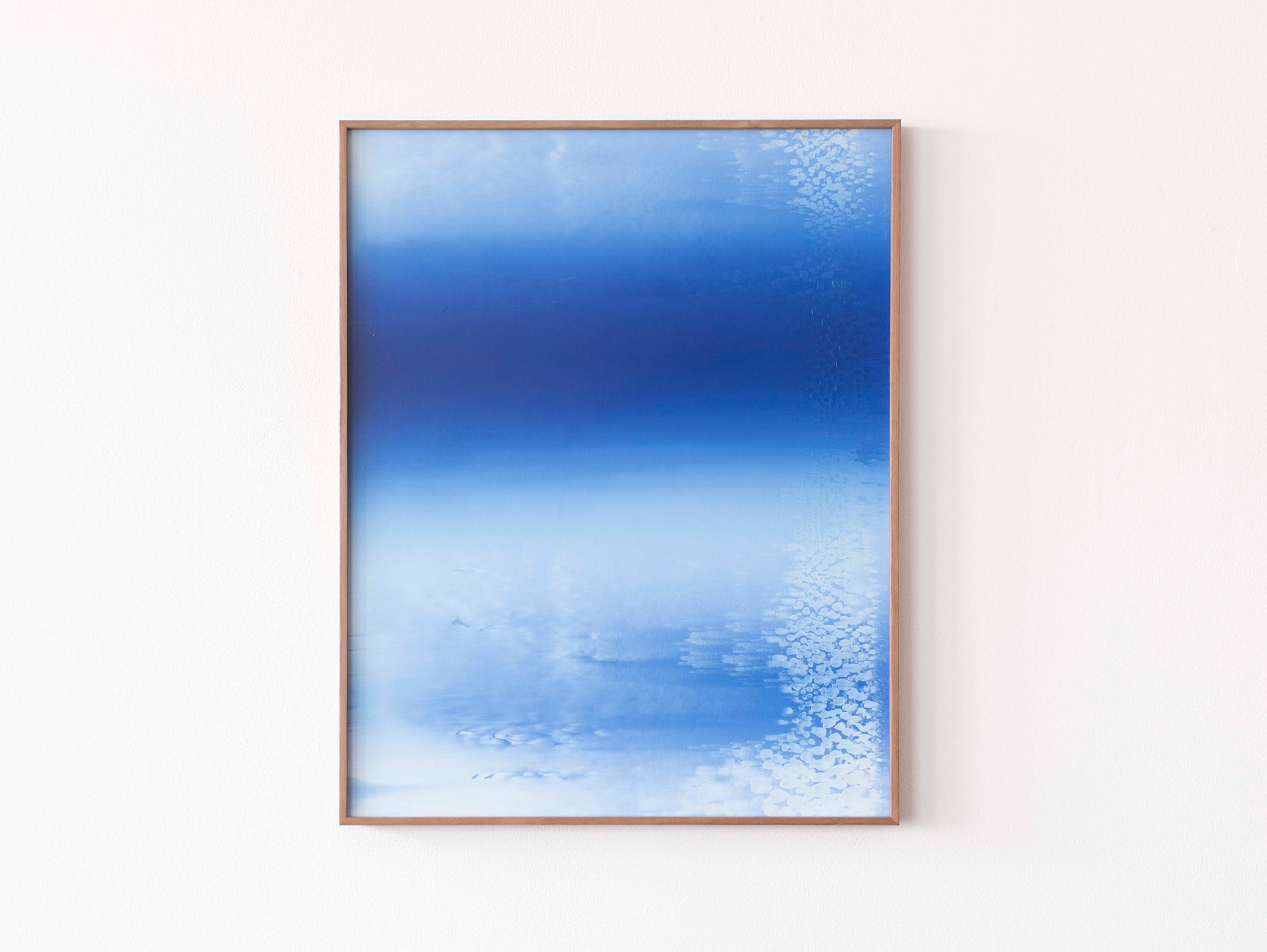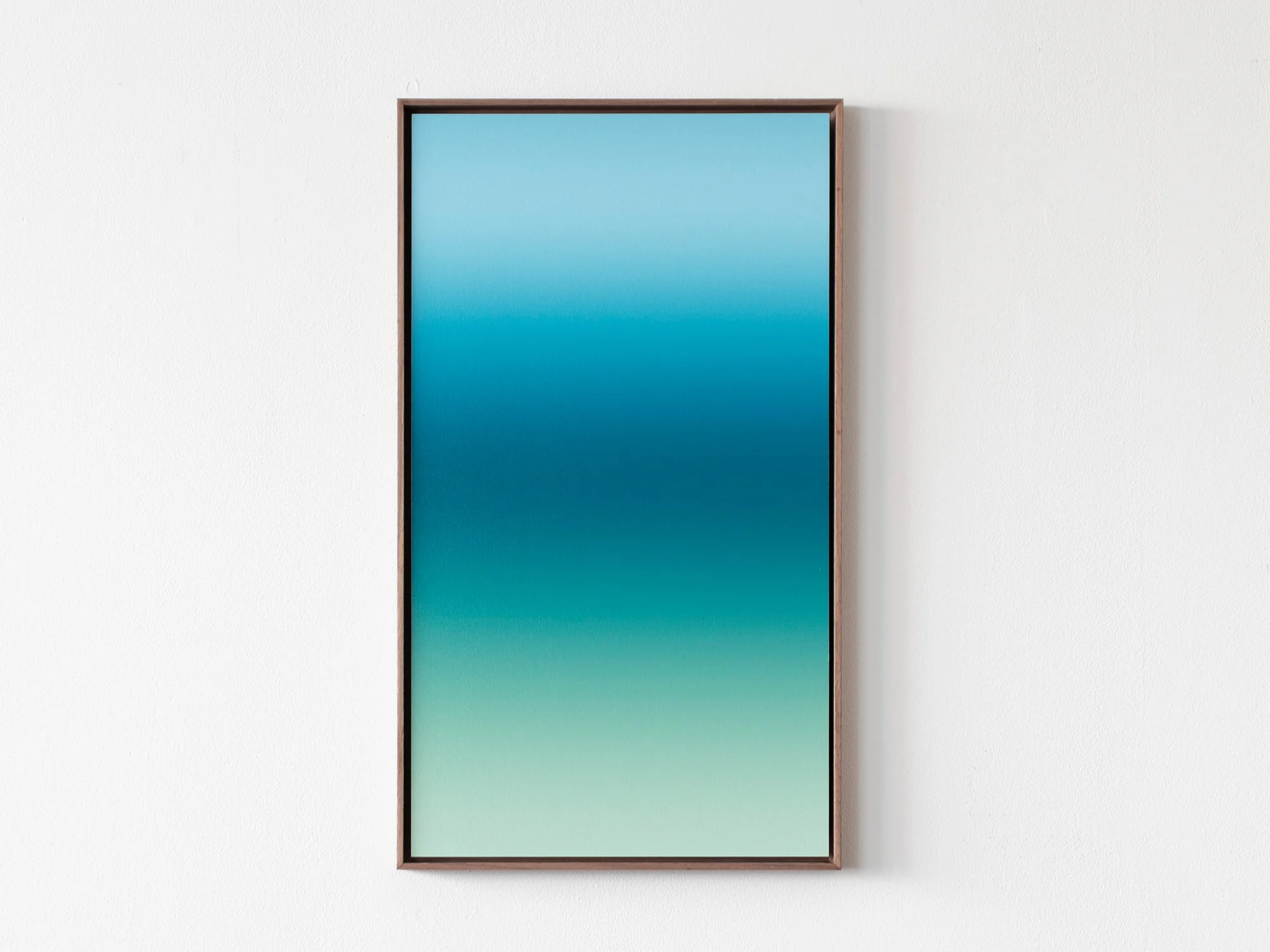When paper becomes painting: Donald Schenkel’s approach to oil on paper
At first glance, it is not immediately clear that some of Donald Schenkel’s paintings are made on paper. From a distance, and even at normal viewing height, the surface reads as a finished, solid painting, not as a sketch, study, or lighter version of his work. That is precisely why these pieces appear in our painting section rather than under “works on paper”.
In Donald’s practice, paper functions as a full, stable painting support. Each work is mounted on Dibond, sealed, and framed in wood, giving it the same presence and durability as his canvas and panel pieces. The material may differ, but the intention and the result are unmistakably painterly.
Detail of Last Shimmer by Donald Schenkel
A practice defined by technique
Donald’s work has long been centred on how oil paint behaves across a surface. Earlier paintings were known for their smooth colour fields: slow gradients, subtle transitions, and a clarity that made the image feel suspended between material and light.
In recent years his process has shifted. His new wet-in-wet technique - executed in a single, decisive layer - invites both precision and unpredictability. Movements must be exact; corrections are impossible. Pigments merge, edges break, and the surface captures every nuance of the process.
This is where paper becomes interesting. Its fine texture makes even the smallest transitions visible. Works such as Last Shimmer or The Last Sunset show how gently the colour settles, holding a depth that feels almost illuminated from within.
A surface that stays close to the eye
Paper brings a different kind of presence to Donald’s paintings. It records detail without becoming fragile, and once mounted on Dibond, it becomes a firm, stable object. Only from very close - often just a few centimetres away - do you notice the quality of the paper beneath the paint.
In works like Between Past and Future and New Gradiant No. 1 , the newer, more physical movements remain crisp on the surface, giving the painting a sense of immediacy. In other pieces, the colour gradients hold a calmness that recalls his earlier series, yet the paper gives the light a slightly sharper clarity.
One visual language across different materials
Whether Donald works on canvas, aluminium, wood or paper, the intention behind each piece remains the same. He focuses on how colour behaves, how movement settles into the surface, and how a painting can hold either calm or tension depending on the choices he makes. These are finished works, not lighter versions or studies, and the use of paper does nothing to diminish their depth or permanence.
Paper simply brings its own qualities. The paint sits a little closer to the surface, small nuances become more visible, and transitions gain a clear, refined edge. Once mounted on Dibond and framed in wood, the work has the same presence as his paintings on other supports. The result is not defined by the material underneath, but by the consistency of his visual language and the clarity of the decisions that shape each painting.
You are warmly invited to schedule a studio visit, where you can take the time to see Donald’s paintings up close and experience their full presence in person.




























